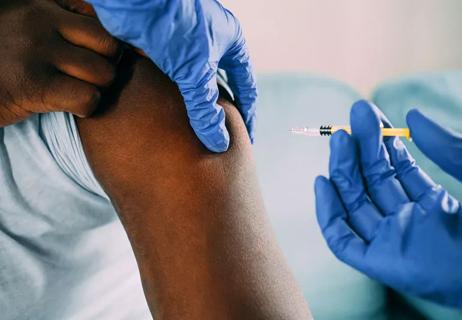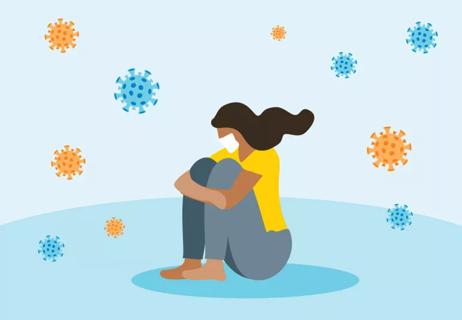Advertisement
While it typically starts in October, vaccine effectiveness can affect its duration and severity

Lazy late summer days will soon give way to cool autumn nights. This means flu season is around the corner, too. The flu, or influenza, is a viral infection that attacks your nose, throat and lungs.
Advertisement
Cleveland Clinic is a non-profit academic medical center. Advertising on our site helps support our mission. We do not endorse non-Cleveland Clinic products or services. Policy
So, when exactly is flu season? And when does flu season start?
In the U.S., flu season can start as early as October. But sometimes, it doesn’t rear its head until January or February.
Infectious disease specialist Kristin Englund, MD, explains how we can predict the start of flu season.
To get an idea of how heavy or light our flu season will be, we look to patterns in the Southern Hemisphere. And it’s why experts are foreseeing a flu season with more cases this year.
“We often use Australia as a way to predict what we’re going to have because they’re kind of a season ahead of us,” Dr. Englund explains. “This year, they’ve seen a rise in the number of cases of influenza. And we are certainly going to see a significant rise in the number of cases of influenza this year as well.”
When it comes to last year’s flu season in the U.S., the U.S. Centers for Disease Control and Prevention (CDC) estimates that from October 1, 2022 through April 30, 2023, there were 27 to 54 million flu illnesses, with 300,000 to 650,000 flu hospitalizations — and 19,000 to 58,000 deaths related to the flu.
As for what to expect this year? Dr. Englund says flu season won’t be as light as it was a few years ago.
Advertisement
“While our numbers of influenza cases will likely be higher this year, we don’t expect the tripledemic that we saw last year — when RSV, COVID-19 and influenza all hit hard in the same few months,” she adds. “This year, we’re optimistic that the new RSV vaccine will protect many older Americans. The updated COVID-19 and influenza vaccines will be important for everyone to get as well.”
There are reported cases of the flu in the U.S. year-round. But when it comes to flu season, the CDC says flu cases typically start to rise in October and peak between December and February. In some years, flu season months may extend into May.
“Influenza A season usually ends around March, but that is when we can see influenza B rising, so the flu season is usually around until April or May,” says Dr. Englund. “You can check out actual numbers of flu cases on your local health department’s website or at cdc.gov for the Centers for Disease Control.”
No, says Dr. Englund. Think of the last few years and how other viruses like COVID-19 and respiratory syncytial virus (RSV) affected flu season.
“A few years ago, everyone was masking and practicing hand hygiene,” she continues. “We were socially distancing and not going out, because of COVID-19. Influenza is spread the same way, so we were protecting ourselves from influenza as well.”
With the introduction of the COVID-19 vaccines and the lifting of mask requirements, people started going out more. This shifted the following year’s flu season — and the forthcoming one as well — when we saw more cases of RSV.
Other factors like the kind of circulating strain of influenza, timing of flu season, how well the flu vaccine works and how many people get the flu shot can all play a role in how the flu season will unfold.
Even if a flu season is deemed “light” or not as bad as years past, it’s still important that you get your flu shot, advises Dr. Englund.
The vaccine, which is updated each year to reflect circulating strains, reduces your chances of getting the flu or becoming severely ill if you do.
And the flu vaccine is even more critical for older adults who are over the age of 65, children under the age of 5, pregnant people and people with certain health conditions such as asthma, COPD, diabetes or a weakened immune system.
“While every case of influenza can’t be prevented, everyone should do their part to protect themselves and those around them — by getting your flu shot, washing your hands, staying home when you are sick,” encourages Dr. Englund. “You could save someone’s life.”
Advertisement
Learn more about our editorial process.
Advertisement

You can help strengthen your child’s immune system by focusing on hand washing and staying up-to-date on their vaccines

Start slowly with clear fluids, and then move to bland, easy-to-digest foods

Symptoms can overlap and be hard to distinguish, but there are some telltale differences

It’s best to treat flu-like symptoms as if you have COVID-19

The flu, RSV, COVID-19, pneumonia and more typically circulate during cold weather months

Get vaccinated, consider wearing a mask and stock your medicine cabinet

Influenza puts stress on your body and can lead to serious conditions like pneumonia or stroke

Prevention is best against this serious illness

Focus on your body’s metabolic set point by eating healthy foods, making exercise a part of your routine and reducing stress

PFAS chemicals may make life easier — but they aren’t always so easy on the human body

While there’s little risk in trying this hair care treatment, there isn’t much science to back up the claims